What tools can I use to improve my SEO?
Search Engine Optimisation (SEO) is something that has always seemed too complex for most people to learn, that’s why they rely on specialists. And while a specialist can bring additional insight and experience to bear, you would be surprised that there are a range of tools available (some free) that can help you to learn about SEO, and use it to inform your decisions right now. Some of these are from Google themselves! Most of the tools you can download or buy will be using, at least in part, Google’s own data, so you can take it straight from the source and learn your own lessons along the way. Blogs from companies we mention below, like Moz and Yoast are great for learning skills and to get an idea about what’s changing in the SEO industry.
What is SEO?
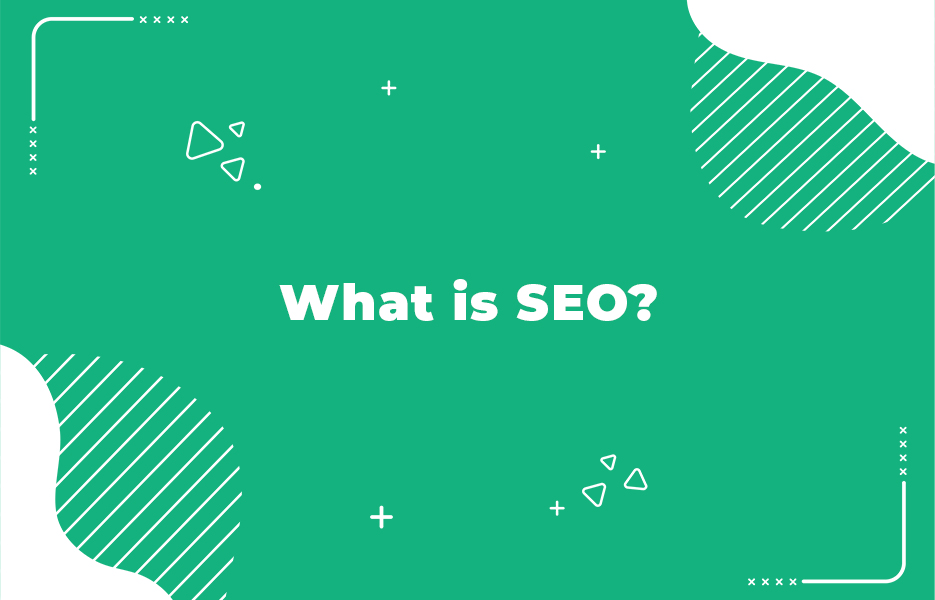
The rules that define what we now Search Engine Optimisation (SEO) started out before there were even search engines. They were guidelines for creating ‘readable’ web page content to sit within clean HTML markup, so that people would want to link from their pages to yours. After all, it’s rare that good developers make great content writers as well, and there were more developers than there were writers online. By setting guidelines about how the information was presented and advertised to users, it maintained the experience of the people using the web over and above technically correct pages that displayed well in the browsers they used.
As search engines came into being, they used this information to make it easier to find what people were looking for on their Search Engine Results Pages (SERPs), because that structure and those guidelines meant they didn’t have to necessarily search the whole page every time.
As the use of the internet, and the world wide web grew, these rules also became guidance and expectations in more depth as to how the content was written –this allowed search engines to index the content, because it was not always in alignment with what people ‘advertised it’ as using tags. This wasn’t generally malicious, but it did impact the experience of those reading the pages and searching for information.
These changes were enforced by the very real need for those web pages to be visible on the SERPs, so that they could get people’s attention. As on page advertising became more sophisticated and widespread, the ability to earn money from your page by getting lots of ad views and clicks also encouraged people to want to increase their ranking on the SERPs.
With many different providers of search, developers and writers had to pick and choose whose rules they would follow, as not all of them were able to be satisfied simultaneously. It wasn’t just about making it easier for people to find what they needed, though – it was also about deciding which search engines were most likely to be used by people if they were looking for information in your area or category, so you knew which rules and conventions to follow.
Firstly, using tags in the text broke it into sections based upon whether it was a heading, body text, a quote and other types. In addition, meta information (information to describe the contents of the page) was used to tell the search engines what the subject of page was. But as people abused this, and used unrelated tags, forcing the search engines to become more sophisticated. And so SEO became more sophisticated, too.
Today, SEO as a subject and practice encompasses a range of things about the page itself and the content within it, but they add up to one basic message:
The content of your page should be well-written, and clear. The user should find it easy to read and comprehend, and the more useful the message is, the better and more authoritative it is – both for people and the search engines.
The tags you use aren’t just about the structure of your content when search engines index it, but about PPC ads and other marketing tools. How well regarded your page is (eg. http://www.mypage.com/blogSEO.html) can be referred to as it’s Page Authority (PA) – Also referred to as ‘Page Ranking’. How well regarded your site is (eg. http://www.mypage.com), meaning all the content on it, is your Domain Authority (DA). Both matter for different reasons and affect where Google places you on the SERPs.
Search engines like Google will still prioritise pages that are written properly with the right structure and tags. But they also have semantic checking in the search engine, like Word or Grammarly, and they have humans spot checking the page content too, just to make sure it reads well and is actually about what it says it is.
You can (and should) link to other pages too – The closer to the subject, or more relevant, the better, as they give you context, and people may link back to you when they see where their visitors are coming from (back linking)! Because the search engines rank websites as regards their usefulness and reliability – the higher the rank of the pages you link to (which are relevant), the better it affects your site’s position in a given search and your perceived trustworthiness. It’s good to be able to evaluate the best choices when comparing two articles that are equally valid but have different approaches, so you can connect to the one that will best affect your articles results and search rank.
Why should you be interested in learning about SEO and SEO tools?

SEO isn’t just for marketers. It’s important for people that write content to have an understanding of the basics to make sure you write well for the audience you’re targeting, as well as the site the content will go on.
There are a whole range of reasons for people in business to get to know more about how the web works for the people you are dealing with (or competing with). If you understand how the web works, you can help your company to do better online by knowing the right questions to ask, and the right resources to generate to help your company rank better in the SERPs and be more profitable by getting a better Return on Investment (ROI).
If you’re a content writer, or looking at hiring one, then when deciding what content to write, you need to do your research – find out what people are asking and searching for about your subject, what others are writing about that gets a good response, and use that to guide what you do (and don’t) write, and the sources you reference, while finding your own message that adds value. If what you write doesn’t rate with the search engines, who will see it? Who will read it?
As a member of the Business Development team (Or if you ARE the Business Development Team!), you want to make sure that your company is bringing in the leads you need to do your job well. So understanding what people are looking for and the questions they are asking lets you prepare, and lets you know that you should be requesting, so that the marketing and content teams fill the gaps that could improve the quality and volume of your leads.
If you are deciding whether to book a trade show for your company, then SEO tools allow you to assess the events you’re booking, and the quality of the site by who links to it and where it ranks.
What is domain authority and what is page authority?
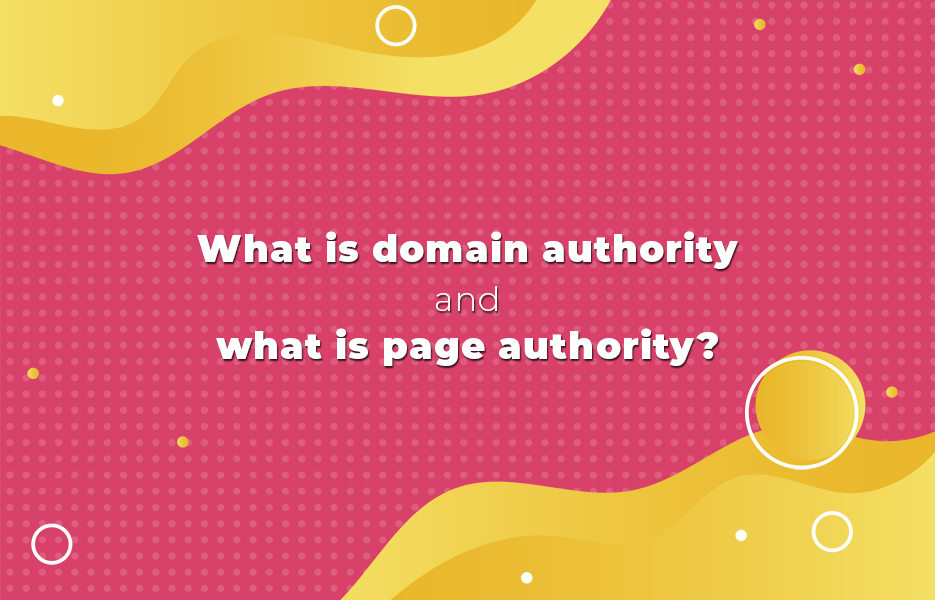
Page Authority is a score calculated by different tools as an approximation of how Google’s search algorithm regards a given web page (http://www.mypage.com/BlogPost.html), in terms of how authoritative it is, and therefore how well it will show in a given set of SERPs it is valid for. People also discuss ‘Page Rank’ for Google, but this is a term they don’t tend to use anymore.
Domain Authority was a concept originating with Moz, and is a way that various tools calculate and represent the way that the whole website (http://www.mypage.com/) ranks for search engine results, and gives you a more general idea of Google’s opinion of the authority and respectability of the organisation or site.
Because all of the different tools draw on different sources of information (including Google) and use slightly different algorithms, they all produce similar but not identical ranks for a given target.
Because all of the different tools draw on different sources of information (including Google) and use slightly different algorithms, they all produce similar but not identical ranks for a given target.
Difficulty scores
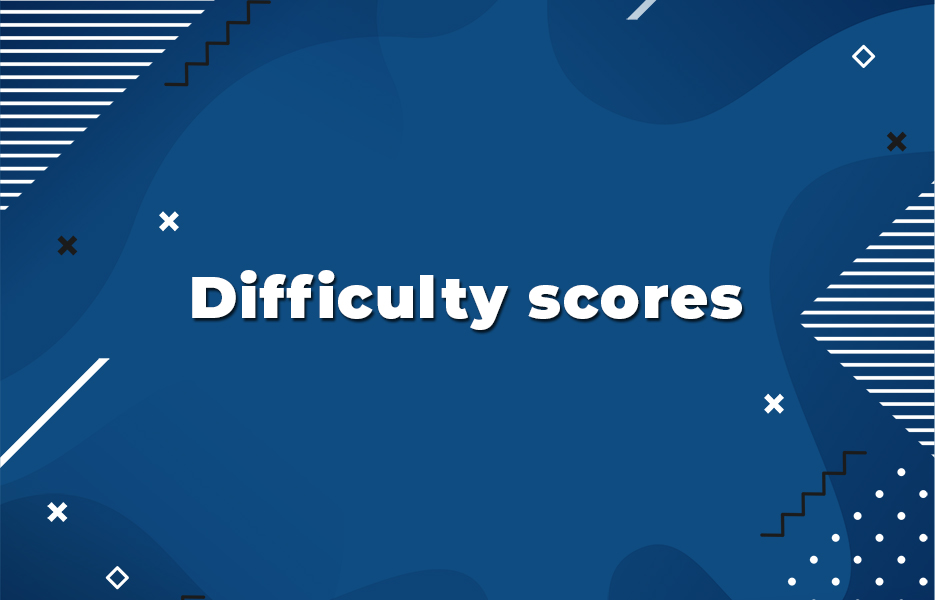
Because DA and PA are variable, and because they measure how authoritative the page or site is to Google, they don’t guarantee to match Google’s results on the actual SERPs (Search Engine Ranking Pages), as Google is continuously changing its search algorithms and tweaking them. This led the SEO industry to find a compromise by creating different way of a different metric for assessing pages – difficulty scores.
Each tool calculates difficulty scores using their own metrics, but, on a scale of 0 to 100, the difficulty score for a page and keyword combination tells you how likely that page would rank at a selected location in the Google SERPs when searching for that keyword organically, (that means we’re assuming you were not paying Google to adjust the result through advertising or otherwise).
The DA and PA factor into the difficulty score, but they’re only part of it. Also included are:
- Volume of paid ads for that keyword
- Keyword search volume (How many people search for that keyword per day)
- Competition for a position in the search results for that keyword
- And many other things
Effectively, the difficulty score is balancing out Google’s estimated opinion of your page vs the difficulty of getting it ranked – so a high score shows that you have a better chance of scoring a good result vs the estimated competition (including paid search). The idea is to help you and your team to avoid wasting time and money trying to rank for a keyword when you’re outnumbered or being outspent.
Obviously some tools will produce results that are better for your category or industry than others, so try evaluating a few to find the best fit. If you’re trying to rank a piece of content for highly competitive keywords, you must consider the difficulty. For example, a rent report, in a tough industry like real estate, might be difficult to get to rank on the first page. So, you might want to target less competitive keywords to start.
SEO Tools
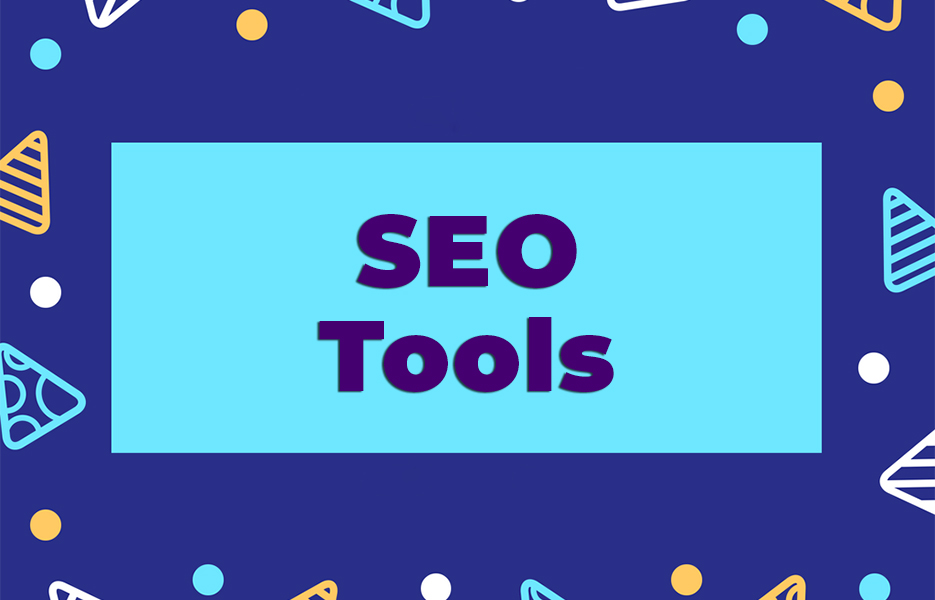
There are a wide range of SEO tools available for use, and as in many cases there are some which are better, but some are just a better fit for the way you work. It sometimes pays to try several.
They also range in cost – And the cost doesn’t reflect their value, as some of the most important tools cost nothing, while some of the most expensive tools replicate functionality that you get in the free tools with a different wrapper about them.
We’ve presented a selection of these tools below, so you can start to decide which ones suit your needs (and your budget). Don’t shun the free ones until you try them, and don’t be afraid to try a tool just because we aren’t talking about it here – SEO is constantly growing and evolving.
It doesn’t change the fact that you can get most of these results yourself from the free tools provided by Google (Google AdWords, Google Analytics and Google Search Console among others). The non-Google tools are mostly drawing on information from Google, primarily the Google Adwords API and adding some of their teams experience and research to produce recommendations and feedback that you can use when looking at how best to promote your site and reach your customers.But it’s not really all that economical to reinvent the wheel for most businesses. And don’t forget that you can use a browser in incognito mode to run searches without the bias that comes from Google recognising you to verify assumptions too. Because incognito mode doesn’t use or store cookies, Google has less information to use about you and your browsing history when preparing search results, so it shows a much ‘cleaner’ view that you can use to see if your own browsing habits are being used by Google when deciding how to rank what you see.
But even if you’re using the paid tools the majority of the time, you can use Google’s free tools to check and verify things periodically. Software engineers aren’t infallible, teams change, and they change their minds about the best way to approach a problem – and if some of their assumptions change, you may find that the tools you chose once, are no longer following the same path you picked them for.
Keyword-focused SEO is a way to identify subjects that people are looking at, so you know where to focus your efforts and interests. SEMRush, KWFinder, ‘Answer the Public’ and Moz are all designed to operate in this area, as is Google Trends.
Where we discuss prices, these should be assumed as ex-VAT unless stated otherwise.
Google’s not the only game in town
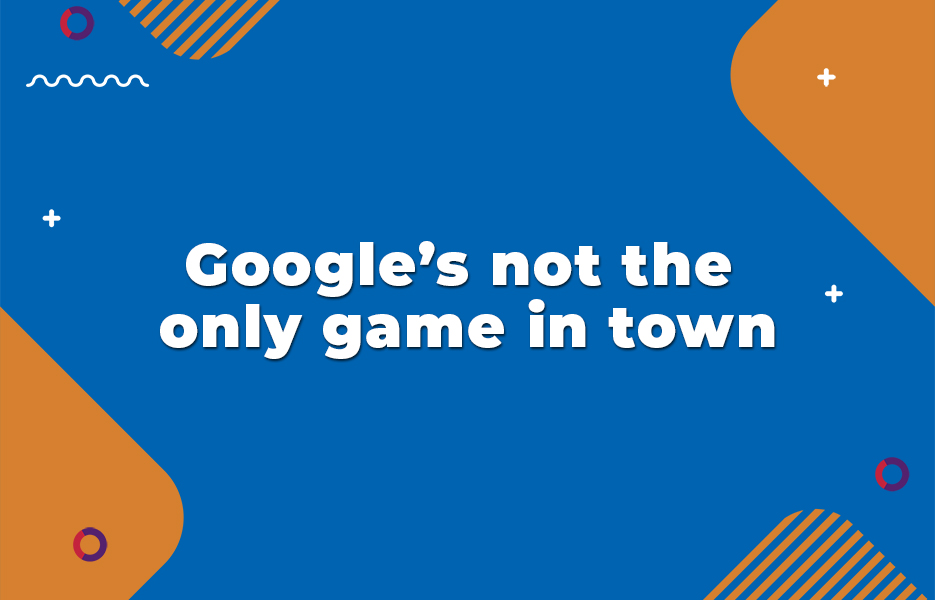
Don’t forget that while Google has 90% of the search market, and the standard tools feed from it, Microsoft’s Bing has 20% of the US market, so have a look at their tracking data occasionally, to keep things interesting.
SEMRush
From $99.95 per month for Pro plan, or $999.40 up front for annual subscription (Save $200).
SEMRush is a tool that is designed to help you find profitable keywords in your area of interest or business. Originally released in 2008, it has continued to grow and improve, and it can be used to optimize your site, create content that the audience wants to read while giving their visitors a better experience so that they can become customers.
SEMRush offers backlink tracking& analysis, domain analytics, and ad-hockeyword research. It can also track social media accounts as part of its analysis – Brand monitoring mention tracking are supported. Search breakdowns are offered based on desktop or mobile browsers, and it offers suggestions for keywords and proactively suggests changes to your SEO. It also supports ongoing search position monitoring, and web crawling.
SEMRush’s traffic analytics can help you identify where your competitors are getting website traffic, so you can see what they are doing right compared to you, and see if you want to change your own strategies and plans to use that knowledge for your own benefit in raising your profile and gaining more visitors and customers.
Its ‘Domain Overview’ section lets you see the specific keywords your competitors are targeting, and how well they are performing for them compared to you.
The ‘Traffic Sources Comparison’ tool provides an overview for you of multiple competitors simultaneously, so you can identify where you want to drill down and spend time looking in detail.
The initial view when logging in is a dashboard, reflecting a snapshot of the Domain Analytics (incoming traffic, divided by paid and organic), along with widgets for the currently active project – these can include backlink auditing, position tracking, brand monitoring and the last site audit.
In addition, by allowing you to set up multiple projects, you can easily maintain searches and work for multiple domains separately.
SEMRush doesn’t allow you to manage lists of keywords over time per project, however, which would be a useful addition.
Pricing is based on tiered plans, or they offer custom plans to suit specific needs by companies or agencies working on large or unusual projects.Overall, SEMRush is a solid choice and well worth trying out – if it hasn’t already been recommended to you.
AHRefs
Starting at $99 per month($82 per month equivalent when paying annually)
AHRefs is commonly known for backlink checking, but it’s not the only thing they can offer to you.It’s probably one of the most recommended SEO tools around, and its Site Audit feature is rated as one of the best and most useful SEO tools available. It enables you to highlight where you should focus your efforts to get maximum improvement in your site’s SERPs performance.
With a large database of information from site/web crawling, they can offer detailed domain monitoring and comparison services – 200 million root domains, and 16 trillion known links make them the second largest website crawler database after Google! Their keyword research tools are great, and they offer high quality keyword suggestions. You can track each site as a separate project, and the maximum number of projects is controlled by your plan.
The interface can be intimidating at first, but it’s in line with the scale of the information and services they can offer your company. It’s designed for professionals, and rewards spending time to learn how to use it. They do continue to work on improving the usability as well as the features.
They offer a $7, 7-day trial to get you started, though their Backlink Checker service is free. Their Lite plan starts at $99 per month, or $984 per year (equivalent to $82 per month). Next is the Standard plan, at $179 per month ($1,788 or $149 per month equivalent). This jumps to $399 per month for the Advanced plan ($3,984 annually, equating to $332 per month). The top plan is their Agency plan, at $999 per month, or the equivalent of $832 per month when paid annually ($9,984).
Google search console
Free
The tool formerly known as Website Console is a staple of many SEO professional’s toolkit, and is a great place to start, with a range of user-friendly tools. Google search console can give you a run down on your site’s performance in SERPs, while highlighting potential issues like ‘spammy links’ – backlinks from poor quality sites – that you need to deal with to maintain or improve your site’s search performance.
The search console helps to make sure you’re staying on top of the changes in Google’s search algorithms, and is constantly updated in line with their latest changes, while new tools are regularly added, such as sitemap reports and URL inspectors. It’s recommended that you check their Webmaster Guidelines regularly, too – You want to stay on the good side of Google!
It can also highlight duplicate metadata on your site, how many pages are indexed and any potential security issues.
If your site has incurred a penalty from Google, you can appeal it from here, and keep your site’s rankings as healthy as possible.
Moz – Mozbar
Free
Moz started in 2004 as a blog with an online community around it, written and built by Rand Fishkin and Gillian Muessig. It’s so much more today – a true SEO powerhouse that is known to be the most up to date source of information and insights on Google’s latest changes and updates, helping site owners and marketers to get the best results and identify the right opportunities. They have a great chat feature for paid members on top of all their other tools and data, which offers useful responses and insightful tips to any questions you ask – Not just an auto responder or cut and paste answers!
Their free toolbar, MozBar, for Chrome users, requires a free Moz community account to use. But, once installed, it enhances your search results with additional metrics and information, including DA, PA and link metrics, right there in the SERPs, and at the top of the pages as you view them. It also offers Page Analysis, so that you can review the structure of the page itself – not just page titles and markup, but link metrics too. You can toggle link highlighting on and off too. It colour codes the links based on whether they are internal, external, or if they have ‘follow’ turned on or off. Looking for a keyword? Enter it and get it highlighted throughout the page.
It also has a Page Optimisation feature, so it will give you tips to improve your own site. There’s lots more it can do for you, too, making it a valuable tool. And free, which makes it even better.
KWFinder
Plans starting from $49 per month ($358.80 annually, equivalent to $29.90 per month)
KWFinder is a very specific and focused tool. It’s not as broad as some featured here, but what it does it does very well.
KWFinder is all about ad hoc keyword research and recommendations for your SEO efforts. And at that task, it’s probably the best in the market. It can be tried out before you commit, with a free 10-day trial, but you can only make 5 lookups in a given 24-hour period.
Even if you’re a beginner, KWFinder’s interface is simple, straightforward and easy to use. You start with a simple search box – Nothing complicated happens until later. When you enter a keyword, you can choose a specific language to search for. You can also filter your results geographically – by country, by city. Great if you’re a local business looking to grow, or you’re trying to find out why sales are low in certain areas.
Once you’ve executed your search, KWFinder returns information for you. First it shows you a list of suggested keywords, each showing their history over the past year – Average monthly search volume, average cost per click, the level of competition for the keyword as a percentage (0-100)and the difficulty score. This lets you review options for additional and associated keywords – any difficulty score over 60 is probably too difficult to achieve control of vs the existing competition. So you can identify the associated phrases and terms that you have a chance of coring and being shown in the SERPs for without excessive spending and problems.
You can add these words to a list, and repeat the search for other keywords. Once the searching has finished, you can return to your list, and evaluate their difficulty scores and other information, to end up with the keywords you want to be targeting to get better SERP results and visibility. Of course, there is other work you’ll be wanting to do, but they lie outside of the scope of KWFinder. But it gives you a good place to start.
Google Trends
Free
Google Trends is a valuable, but very focussed tool to help you to see who is searching for what, and to plan out the keywords you’ll be targetting. By looking at the popularity in search of a term not just now, but going back over 10 years, you can spot patterns and opportunities before they mature, and get ahead of the pack. Or you can use it to find out what people are searching for as well as a given term, so you can find complimentary opportunities that will reinforce existing success for a given keyword by ensuring that your SERP results are improved to reach people you aren’t being seen by, but who will likely be interested in your content, your products or your services.
It’s a valuable source of opportunities for anyone in eCommerce or content writing. If you want more information, see our blog post about using Google Trends in eCommerce.
Answer the public
Free
Answer the Public is a free site/tool to help you write better content, and rank that content better in the SERPs. How does it do that?
If you start with a keyword, Answer the Public will show you what people in search are asking or saying about that keyword. It’s a tool to help you decide what you’re going to write about that keyword in order to gain the most interest and get the best results.
It shows you these as a graphic view, with the keyword at the center, and links spreading out to common adjectives associated with that keyword in search (what, where, who, are, can, etc), and from them to actual statements or questions using that adjective, with an indicator of their popularity by way of a coloured/green indicator that becomes dimmer as the results are less popular. Clicking on an adjective or another result opens Google for that term.
If we enter ‘DropShipping’, It returns 5 tabs for results:
- Questions (ie Can DropShipping make you money)
- Prepositions (ieDropShipping without Shopify)
- Comparisons (ieDropShipping vs FBA)
- Alphabeticals (Lists all results in alphabetical order)
- Related (ieDropShipping UK)
This enables you to not just identify the best subject for an article, but to see what other people are already writing, so you can spot the gaps that will make your work unique. You can even download the results as a CSV to import into other tools, or to review offline.
For business development professionals, this lets you see what the questions people are asking, and what they will have got as answers already – Especially useful when preparing for a big trade show. And all this at no cost! Insight and preparation means you have prepared answers and references for the questions your customers will most likely ask. This is a valuable tool, and ‘Answer the Public’ gives you lots of insight.
Yoast
Free, or Premium version at £79 per site
If you have a WordPress blog or website, then you should be using Yoast.
Yoast is a plugin for your website that helps you to improve readability, structure, and to ensure you provide the right information (meta descriptions, keywords, URLs and much more) to give your pages better visibility on SERPs.
But that’s not all. Yoast has a great XML sitemap tool, so you can get an overview on the structure of your site, including breadcrumbs as you delve into it. It also has a snippet preview, so that you can see what your customers will see in Google when their search includes your page.
It’s got great functionality, it’s easy to use and it gives great results. You don’t have to be an SEO expert to get the most from it. Content Writers can and do use Yoast to help them to get great visibility in the SERPs, and to improve the performance of their work.
CanIRank
CanIRank is an AI SEO software that focuses on providing Opportunities over data. Sifting through endless SEO data can be time consuming. CanIRank provides actionable opportunities specific to your business that you can do right now, with ease. Each opportunity is also broken down to tell you what type of ROI completing this action will bring you. Find keywords, content ideas, grow your followers, grow your thematic relevancy and more with CanIRank. Supported by a full-service SEO agency, delegating opportunities to CanIRank is simple. With four plans, CanIRank is great for DIY users, agencies, and businesses of all sizes. You can create your account here.
What is a backlink?
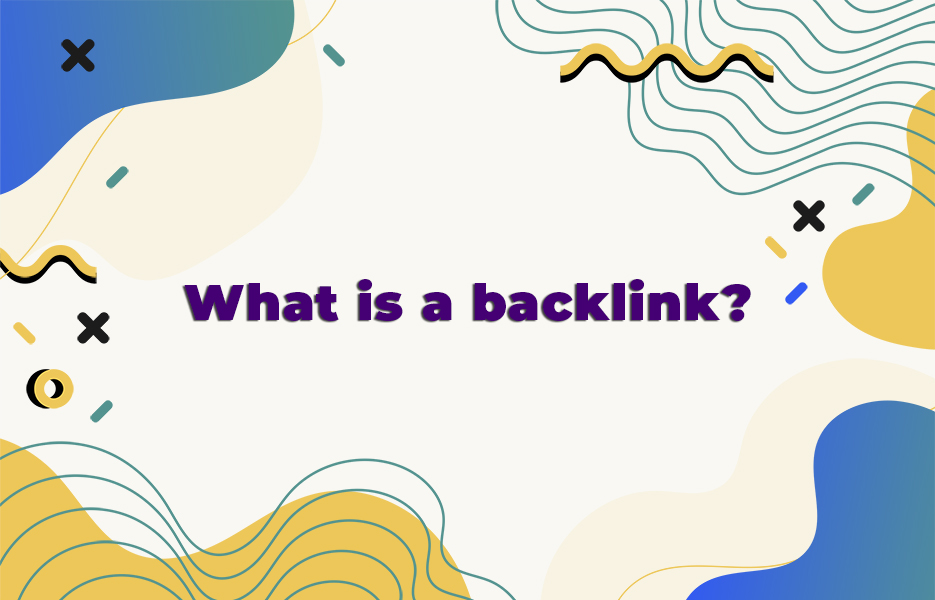
‘Backlink’ is an SEO term that focuses on the relationship when one website creates a link to another. This is important because, by linking information on the other site or domain, the first site shows that it has confidence in the value and trustworthiness of that site and that piece of content.
Search engines use this as one of their indicators to assess the sites. If lots of people are linking to a specific site or page, then many people are finding value in that content, and it should therefore be ranked higher when assessed against other pages with less backlinks. SEO tools can track that information to help them estimate Google’s assessment as well. The more popular the site that created a backlink, the greater worth it has. Just as in society, the approval and trust of someone that everyone respects and knows will be more valuable than the approval and trust of someone that is only known within your immediate group of friends or family.
In addition, search engines worry about how ‘fresh’ the link is – how recently it was created. The fresher the link, the more it contributes to your page (Whether positively or negatively is based on the site the link is from!) Also, the more links on the page compared to the amount of content, the more likely the search engine is to take away some of the values of those links. Google wants links that are relevant to the subject of the linking article, and that article’s value is based on the idea that it’s useful in and of itself to enhance the meaning and clarity of the subject, and that it is not just a page full of links and identifiers.
You can seek out such links (‘link building’) from trusted sites by showing your content has worth and value, and will therefore add value to them, as well as to you. The more high value links you get for your page, the better you’ll rank (As long as they are linking to you for a relevant reason). Lower value links from sites that have a bad reputation might harm your rankings, in contrast. The way you build the link (Which page, what anchor text, etc.) will also affect the perceived value of the backlinks you make or receive.
Backlinks and link building are a key part of off-page SEO.
Backlinks are divided into three main categories:
- Natural links: If you have taken no action to encourage a link to be created, then it’s natural. So, for example, a blogger including a link to your page because he found it on Google and it inspired him to write.
- Self-created links: Creating an entry for your site yourself, for example in an online directory or forum to direct people to notice and enquire about you and your services
- Manually built links: Links that you have caused to be created. Link-building activities might include asking customers to include a link back to your site, or contacting and enlisting influencers to promote you or your products.
The current trend is moving away from ‘link building’ and towards ‘link earning’, so natural links are more important than self-created links, for example. This is a call back to the early days of the web, when search engines were less sophisticated, and places emphasis on the value of links you haven’t paid for. (directories are less important than references from articles about your chosen industry, or in news articles highlighting positive news.)
This also means that social media can also be more valuable when people are mentioning and sharing your pages and articles in their blogs and social media because it has value to them and has enhanced their understanding, or is a better way to explain something complex than they can.
What is off-page SEO?
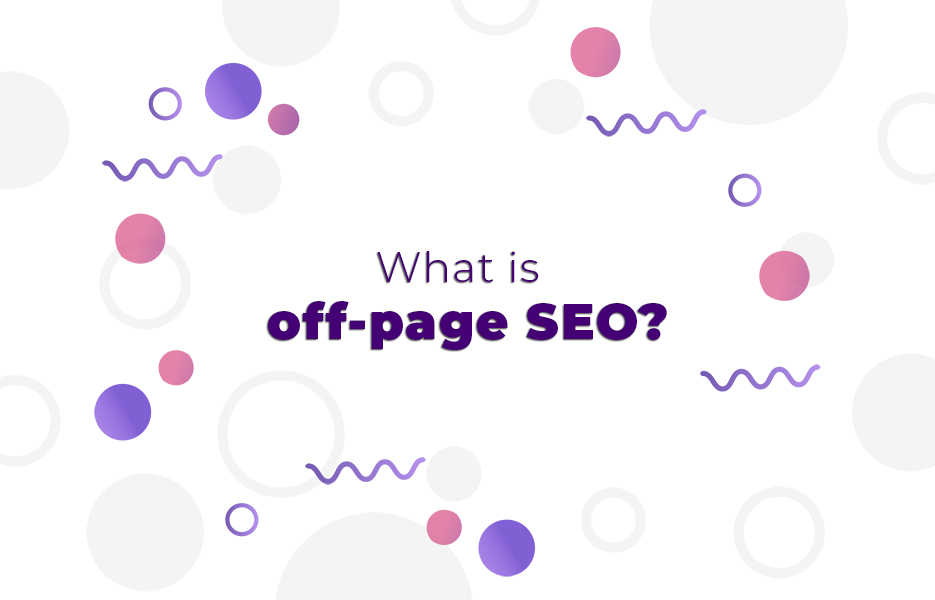
Off-page SEO (or ‘Off-site SEO’) refers to things affecting your search engine rankings that happen off the immediate pages in your site. This is primarily based on getting backlinks to your site from domains and pages that have good reputations and are highly authoritative – big companies like Microsoft, Apple or IBM, trusted blogs and news pages like the BBC, or Moz, for example.
These links will increase your site’s value and authority in the search engines’ rankings, making it more likely others will see and access your site and the content on your pages. They might even link back to it themselves after!
Not all off-site SEO is link building, however. There’s also the use of social networking to promote your brand or products, influencers, mentions of your brand without linking – even writing guest blogs. The search engines will notice the frequency of use for a brand, and that factors in, even without, though not as much as, links.
Looking to the future

It’s important to remember that search is changing – As mobile becomes more prevalent, and voice search, we can see a loss of real estate on the first page and beyond for traditional SEO.
Artificial Intelligence (AI) and Machine Learning (ML) are being used more, and we can already see changes in the decisions and ratings Google makes. This means the SEO tools are already trying to keep up, while adapting to other changes, like Featured Snippets, Accelerated Mobile Pages, and Quick Answers are used to supplement search results, meaning there are maybe 7 slots instead of 10 for you to bid against. Tools like SEMRush are starting to emphasise the differences, showing separate Desktop and Mobile results for example.
SEO is a massive subject, and we’ve only really covered a small part of it, and a small number of tools that can help you to improve the visibility and SERP ranking for your page and site, reaching more readers or customers.
When you understand more about how Google (and other search engines) see your blog posts or web pages, it means you can not only understand how to look at your presence online, and the way you present yourself to maximise results. It means that you understand how others get where they are, and can judge whether you want to work with them. It’s a liberating experience.
And the right tools, as you can see, will make it much easier to see what you should do, the questions you should ask, or where you should be spending money and effort.
As we start the New Year, take this opportunity to stretch yourself. Try a new tool, learn a new skill, and decide how you want to be seen, and who you want to be seen ahead of. Improve your business, and show people just how good you are.







DropShip products from verified suppliers to diversify your inventory and scale your eCommerce business